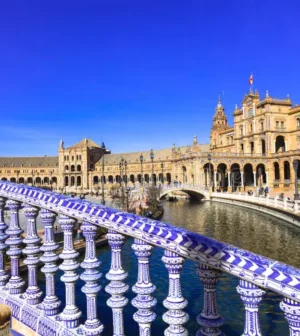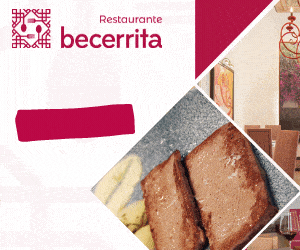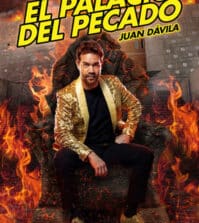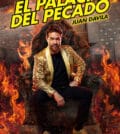- Ice skating rinks in Seville this Christmas
- Christmas Mapping ‘Navigalia’ in the river of Seville. Dates, passes and prices 2024
- Christmas lighting in Seville. Lights on. Christmas lights
- Itinerary, Tour schedule and the Cavalcade of the Magi from Sevilla 2025
- Christmas Menus in Seville
- Belen of Sanlúcar la Mayor. Christmas in Sevilla
- The Cirque del Sol returns to Seville with 'Alegría'. 2024
- List of Booths April Fair
- April Fair in Seville 2024. From 14 to the 20 April
- Valentine menu Sevilla | Valentine dinner Sevilla | Valentine Romantic Dinner
What to do in Seville. Essential places to visit
Did you found interesting?

Welcome to the beautiful city of Seville, a destination that shines with a rich history, Stunning architecture and vibrant cultural scene. In this article, I will take you on a tour of some of the most emblematic places of this jewel of Andalusia, and I will show you what there is to see and do in Seville to make the most of your visit.
What there is to see in Seville
The Giralda and the Cathedral : The famous Giralda tower was originally a mosque minaret built in the 12th century. Seville Cathedral was built on what was said to be the tomb of a dragon. It is the largest Gothic cathedral in the world. A jewel of humanity. Culture crucible. Fusion of styles: Almohad, Mudejar, Gothic, Renaissance, Baroque…
The Courtyard of the Orange Trees: Landscaped open space of the Seville Cathedral, heritage of the almohad mosque.
The golden tower: A medieval tower built in the 13th century that used to be a prison and today houses a Naval Museum.
The Real Alcázar: Walled palace complex built in different historical stages. The original palace was built in the Early Middle Ages. Some vestiges of Islamic art are preserved and, from the period after the Castilian conquest, a Mudejar palatial space and another in Gothic style. This royal palace has been used as a setting for the series “Game of Thrones”.
The Parque de María Luisa: It is the first urban park in Seville and one of its green lungs.. In 1983 declared Asset of Cultural Interest in the Historical Garden category.
Spain Square: It is an architectural complex located in the María Luisa park. Designed by architect Aníbal González. He rose between 1914 and 1929 as one of the main constructions of the Ibero-American Exposition of 1929. It is the largest building of all those built in the city during the 20th century.. It has banks that represent all the provinces of Spain. You can also take its famous boat ride.
Bullring: It is located in the Arenal neighborhood of Seville.. Built between the 18th and 19th centuries. It is property of the Royal Maestranza of Cavalry of Seville.
Casa de Pilatos: A palace that combines Renaissance styles, gothic and mudejar, Known for its stunning architecture and beautiful gardens.
The Archive of the Indies: This historic building houses an immense collection of documents related to the colonization of America.
The University of Seville: Founded in 1505, It is one of the oldest universities in Spain. The Royal Tobacco Factory of Seville was here, first tobacco factory established in Europe. It has been classified as an Asset of Cultural Interest since 1959, with the category of Historical Monument.
Museum of Fine Arts: Founded as “museum of paintings”, by Royal Decree of 16 September 1835, with the works from convents and monasteries confiscated by the liberal government of Mendizábal. It is located in the square of the same name, occupying the old Convent of La Merced Calzada, founded on land donated by Fernando III after conquering Seville
Collegiate Church of the Divine Savior: Catholic temple located in the square of the same name. This current building was completed at the beginning of the 18th century..
The Palacio de las Dueñas: It belongs to the House of Alba. Built in the 15th century and renovated between the end of this century and the beginning of the 16th century in Gothic-Mudejar and Renaissance style
The Queen's Sewing Box: Located next to the María Luisa Park in Seville . It was built for Queen María de las Mercedes of Orleans.
Sevilla Mushrooms: Metropol Parasol, popularly known as Seville mushrooms, It is a pergola-shaped structure made of wood and concrete located in the central Plaza de la Encarnación..
Royal Mint: In the 16th and 17th centuries, It was the center where gold and silver from the Indies was minted..
The Triana Bridge: Elizabeth II Bridge, also known as the Triana Bridge, It is one of the oldest bridges in Seville. In its beginnings it was a bridge made with boats.
Barrio de Triana: The Triana neighborhood in Seville is the most famous in Seville. Known for its ceramics and pottery tradition. It is the birthplace of many flamenco artists. Located on the other side of the river in front of the bullring. You cannot miss visiting its Food Market.
Barrio de Santa Cruz: It is the tourist area par excellence of the city, houses the Gothic cathedral of Seville, from whose Giralda you can enjoy panoramic views, and the Real Alcázar, a Mudejar-Renaissance style palace surrounded by lush gardens.
Plaza de San Francisco: It is a highly representative space of the city that has historically played, since the late Middle Ages, the functions of the main square. Its name is due to the neighboring convent of San Francisco that existed between 1268 and 1840 and which was accessed from the square. We find the Seville City Hall here.
The flamenco: Considered the birthplace of flamenco, and you can enjoy shows in numerous tablaos and flamenco clubs.
The Fair of April: The April Fair in Seville is one of the most famous festivals in Spain and is celebrated in April with booths, flamenco music and dance.
The Holy Week: Seville, known worldwide for its Holy Week processions, It is one of the most impressive and famous in the world.




















